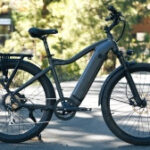Many cyclists, especially those with a background in strength training, find themselves puzzled when their heart rate remains stubbornly low during flat bike rides. You might push your legs to their absolute limit, feeling the burn, yet your heart rate barely reflects the effort, hovering at levels you’d expect from a light jog. This discrepancy between leg fatigue and cardiovascular exertion can be frustrating and leave you wondering if you’re truly getting an effective cardio workout on your bike.
This experience is surprisingly common. While uphill cycling or intense stationary bike sessions at the gym can quickly elevate your heart rate, flat terrain cycling often presents a different challenge. It’s as if there’s an invisible barrier preventing your cardiovascular system from fully engaging, even when your leg muscles are screaming. This can lead to questions about how to truly push your limits and unlock a more intense cardio experience on your “Cardio Bike.”
The Flat Cycling Heart Rate Puzzle
One of the key issues is the difference in muscle engagement and resistance between flat and uphill cycling. When you’re tackling a hill, gravity provides constant resistance, forcing your heart and lungs to work harder to deliver oxygen to your muscles. On flat ground, however, the resistance is significantly lower, especially at consistent speeds. Your legs might fatigue due to muscular endurance demands, but the overall cardiovascular strain can be less intense.
Cadence, or your pedaling rate, also plays a crucial role. Cyclists with powerful leg muscles, sometimes referred to as having “dinosaur thighs,” may naturally gravitate towards lower cadences. While this can be efficient for power output, it might not be optimal for elevating heart rate. Lower cadence cycling often relies more on muscular strength, while higher cadences engage the cardiovascular system more directly. Experimenting with increasing your cadence, even if it feels less natural initially, can be a game-changer for boosting your heart rate on your cardio bike.
Alt text: Cyclist pedaling on a flat road, demonstrating the effort required for cardio workout on a bike.
Muscular Endurance vs. Cardiovascular Intensity
For some cyclists, particularly those with a strength training background, cycling on flat ground can feel more like a muscular endurance workout than a high-intensity cardio session. You might experience significant leg muscle fatigue without reaching your target heart rate zones. This doesn’t mean you’re not working hard, but it highlights the different demands of cycling compared to activities like running or swimming.
Running, for instance, is a higher impact activity that engages more muscle groups and typically elevates heart rate more quickly. Swimming, with its full-body engagement and the added element of breath control, can also drive heart rates up effectively. It’s not uncommon for cyclists to find their heart rate lower during cycling compared to these other cardio activities, especially on flat terrain.
Unlocking Your Cardio Potential on a Bike
So, how can you “unlock” your cardio potential and get your heart rate up on your cardio bike when riding on flat surfaces? Here are a few strategies to consider:
- Increase Cadence: Consciously try to pedal at a higher cadence. Even a slight increase can shift the emphasis from muscular strength to cardiovascular effort. Practice drills focusing on maintaining a cadence of 80-90 RPM, even if it initially reduces your power output.
- Interval Training: Incorporate interval training into your flat rides. Short bursts of high-intensity effort followed by periods of recovery are excellent for elevating heart rate and improving cardiovascular fitness. Sprints, surges, and tempo intervals can all be effective.
- Hill Repeats (Even on Flats): While you’re on flat ground, you can simulate hill repeats by finding slight inclines or even using bridges or overpasses to create short, intense climbs. These short bursts of uphill effort can significantly boost your heart rate.
- Indoor Cycling Workouts: If you have access to a stationary bike or indoor cycling classes, these can be great for targeting your cardiovascular system. Indoor cycling allows for controlled resistance and structured workouts designed to elevate your heart rate.
Alt text: Group indoor cycling class showing participants engaged in a high-intensity cardio bike workout.
Understanding Your Cycling Metrics: Time Trial and FTP
To better understand your cycling performance and cardio capacity, consider exploring metrics like your time trial performance and Functional Threshold Power (FTP).
- Time Trial: Your time trial performance, whether it’s a 10-mile or 25-mile time trial, can provide valuable insights into your sustained power output and overall cycling fitness.
- FTP (Functional Threshold Power): FTP is the maximum power you can sustain for approximately one hour. Knowing your FTP is crucial for structuring effective training and understanding your performance zones. Testing your FTP can help you gauge your current fitness level and track progress over time.
By understanding the nuances of flat cycling and incorporating strategies to elevate your heart rate, you can optimize your cardio bike workouts and achieve your fitness goals. Remember that cycling, even on flat terrain, offers significant muscular endurance benefits, and by strategically incorporating intensity, you can unlock its full cardiovascular potential as well.

